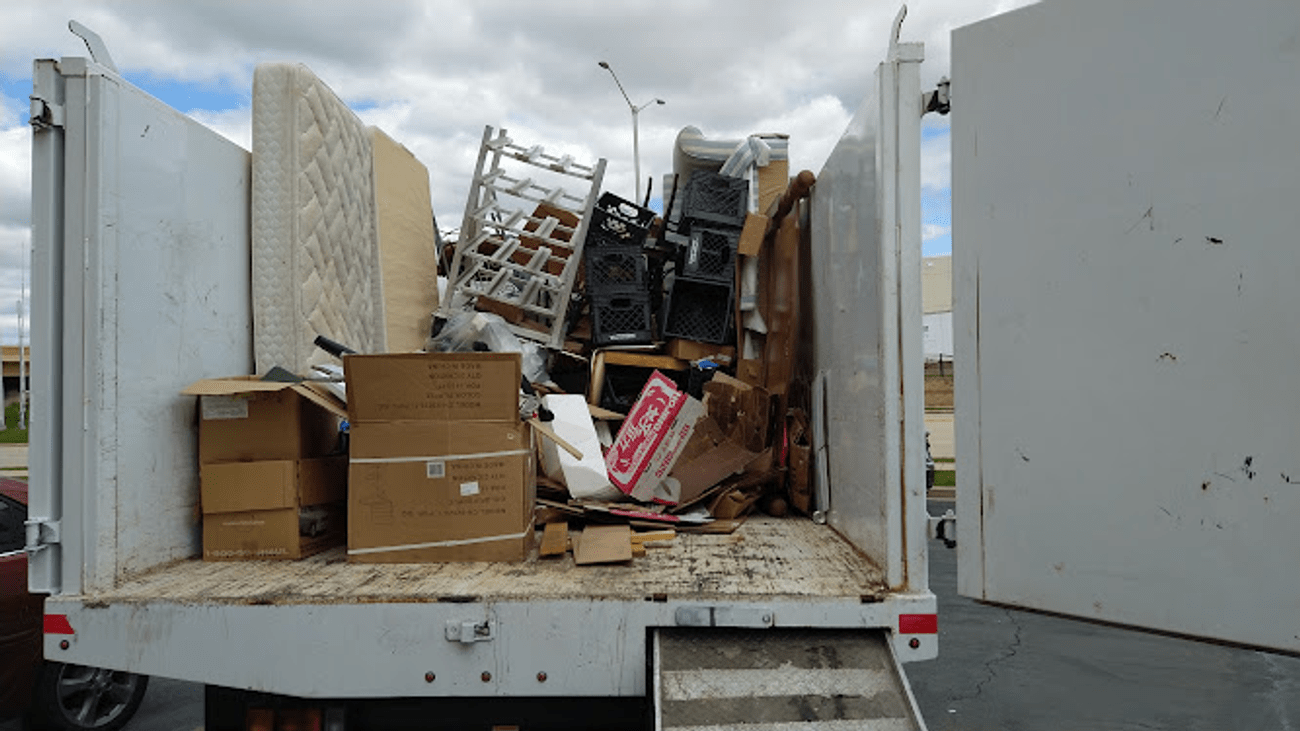BLOG
Why can’t I throw out my old TV?
Most of us remember the old-fashioned, bulky, large TVs from the ’90s to early 2000s, as these TVs were the mainstay for family homes across America. In fact, most of us can likely go into our basements or attics and maybe even find one collecting dust. It may be tempting to toss these old tube TVs into the trash or just sit them on the side of the road for disposal; however, that is not only ill-advised but also illegal and harmful to the environment to throw away these old TVs.
So why can’t you throw away an old TV? What even is a CRT? And how can you safely dispose of them?
The CRT, How It Works, And Why We Can’t Dispose of Them
Simply put, getting rid of an old TV and even some computer monitors can be a massive pain; this is because they contain components housing hazardous and environmentally dangerous chemicals. Older TV and monitors contain a cathode ray tube or CRT. CRTs, after which these TVs and monitors were named, are glass tubes of gas that older styled TVs (specifically TVs manufactured in the 1950s to early 2000s) used to display dynamic images. They did this by projecting electrons through the gas in the tube onto a phosphorescent screen in three colors: red, green, and blue. These beams could then be modulated, adjusted, dimmed, and brightened; by doing so, they create a moving image on the screen. However, these tubes contain large amounts of hazardous chemicals:
- Lead: The glass within CRT tubes contains between 1kg to 3kgs of lead per tube; there are also trace amounts of lead within soldering and circuit boards in old monitors.
- Cadmium: The phosphorescent pigments inside the tube contained cadmium. Cadmium is a bluish-white metal found in zinc ore; it was frequently used as a type of pigment agent due to its ability to create brilliant yellow and blue colors; it is also highly toxic and a carcinogen.
- Barium: The cathode inside CRTs contains a combination of chemicals, but the critical element was barium, or specifically Barium Oxide. Barium Oxide is an irritant that can cause harm to the eyes and skin but is much more dangerous if ingested. It can lead to nausea, diarrhea, muscle paralysis, arrhythmia, and even death if consumed. It is also harmful to aquatic organisms if exposed to the environment.
- Mercury: Certain CRTs used a vacuum pump that contained high levels of mercury. Mercury is highly toxic and can be absorbed through the skin and mucous membranes; it is considered a toxic pollutant from the EPA and is highly regulated.
While the main offenders in these TVs and monitors were the CRT tubes, other components like the processor, soldering components, circuit boards, and certain foams also contain hazardous chemicals that can be dangerous when improperly disposed of.
How Do I Know If My Old TV Is A CRT?
As we mentioned earlier, most TVs from the 1950s through the early 2000s were CRTs, but if you are unsure of your TVs production date, there are a few ways to tell if it’s a CRT.
- Is It Flat or Deep? All CRT TVs are deep in the back; the CRT tube and its connecting components are large and bulky and need a lot of space.
- Is the Front Glass? Gently tap the front of the TV; if it is solid glass, it’s likely a CRT.
- Can It Be Wall Mounted? No CRTs were designed to be wall-mounted or hung; they were too large and heavy. So, if your TV has a wall mount, it’s almost certainly not a CRT.
How Should You Dispose of CRTs?
With the number of dangerous chemicals inside CRTs, the EPA has made the disposal and dumping of CRTs into landfills illegal because many of the toxic chemicals inside CRTs, namely the lead, mercury, and barium, can seep into groundwater. So, putting your CRT on the street, or even worse, throwing it away in a trash can, is highly illegal and can carry massive fines. Here are the appropriate options for CRT disposal:
1: Donate It – Many local organizations and groups will take functioning CRTs; just reach out with a photo of the CRT working and drop it off.
2: Sell It – You won’t get much for CRTs, but they are still widely bought and sold through websites like eBay, or you can go down to thrift stores or pawn shops and sell it there. Luckily, there is currently a growing retro-gaming movement that has seen an increase in the sales and price of good condition CRTs.
3: Recycle It – There are a large number of recycling facilities that will take old CRTs and either store them or recycle them for their parts.
4: Professional Junk Removal Services – Hiring a professional junk removal and hauling service can be one of the easiest and most hassle-free ways to dispose of an old CRT; however, you should always call ahead first and make sure they accept CRTs and let them know the TV being hauled and removed is a CRT before disposal.




